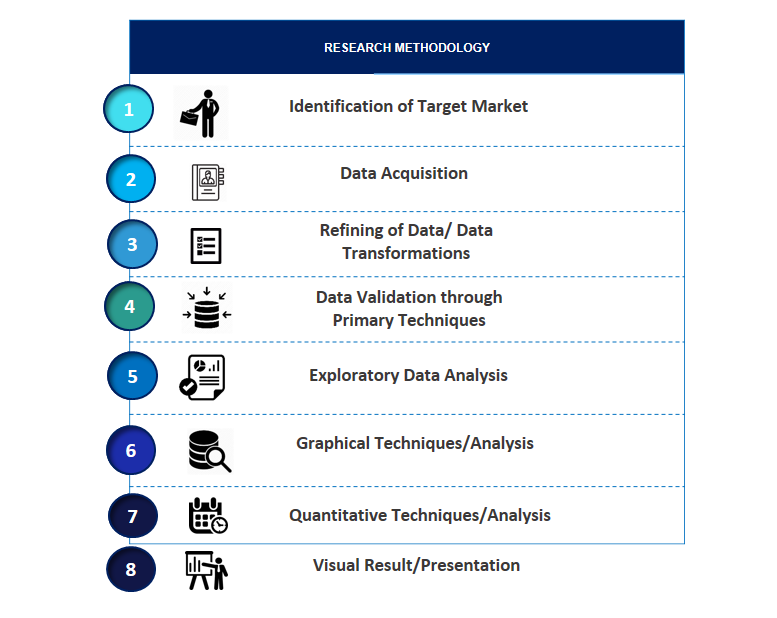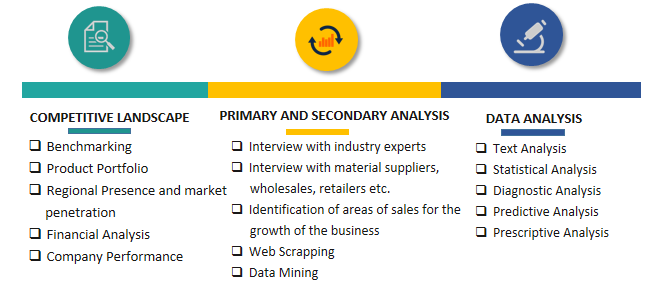Latin America Fintech Market Introduction and Overview
According to SPER Market Research, the Latin America Fintech Market is estimated to reach USD 123.93 billion by 2033 with a CAGR of 6.65%.
The report includes an in-depth analysis of the Latin America Fintech Market, including market size and trends, product mix, applications, and supplier analysis. Fintech, often known as financial technology, is technology that enhances or automates financial services and operations. It employs complex software and algorithms to let business owners, companies, and individuals manage their finances using a computer or smartphone. It is widely used to automate insurance, investments, trading, risk management, and banking services, among other things, and can provide financial data.
- July 2021 - Z1, a digital bank aimed at Latin American GenZers based in Sao Paulo, has raised USD 2.5 million in a funding round led by Homebrew in the United States. Z1 is a digital banking software built exclusively for teenagers and young adults. The company was founded on the notion that by using its app and associated prepaid card, Brazilian and Latin American youth may achieve more financial independence. Z1 is now focused on Brazil, but the business intends to expand to other Latin American countries in the future.
- June 2021 - Conductor, a prominent payments and banking service platform in Latin America, has announced the arrival of its technical platform in Mexico, which is viewed as vital for the company's internationalisation and global expansion.
Market Opportunities and Challenges
Opportunities- The Latin American fintech market has grown rapidly over the last decade, owing to an increasing digital economy, supporting policies, and a significant unbanked population. Latin America has a high smartphone and internet penetration rate, which provides a solid platform for fintech adoption. High urbanisation rates and a growing middle class have boosted demand for financial services. Approximately 70% of Latin Americans remain unbanked, meaning they do not have access to typical financial institutions. This creates an opportunity for fintech companies to provide financial inclusion. Governments in Latin America have enacted regulations to encourage fintech growth. Brazil established a regulatory sandbox for innovative technologies, and Mexico passed a Fintech Law in 2018 that provides licensure options.
Challenges- The region lacks a thriving venture capital ecosystem on par with the United States or Europe. Angel investment is on the rise, although it is still in its early stages. Deals above $50 million are uncommon, pushing entrepreneurs to assemble smaller rounds from family offices and local funders. Outside of Colombia and Chile, there are few government-sponsored entrepreneurship programmes. Notable international VCs such as Andreessen Horowitz have avoided large investments. Scaling is challenging because of the scarcity of capital. Many fintech spend an unreasonable amount of time fundraising overseas. Those who are unable to attract international investors frequently experience delayed growth constrained by tight budgets. Accessing capital is further hindered by political and financial risks that dissuade overseas investors. As a result, the availability of growth capital remains a significant barrier to Latin American fintech attaining their full potential.

Market Competitive Landscape
Central banks in Latin America have done everything they can to push businesses and consumers away from cash and towards digital payment options, frequently leading them straight into the hands of FinTech companies. Some of the biggest market players include Nubank, Uala, Ebanx, RecargaPay, Clip, Bitso, Konfio, Wilobank, Addi, Vortx, and others.
Scope of the Report:
| Report Metric | Details |
| Market size available for years | 2020-2033 |
| Base year considered | 2023 |
| Forecast period | 2024-2033 |
| Segments covered | By Technology, By Service, By Application, By Deployment Mode
|
| Regions covered | Brazil, Mexico, Chile, Colombia, Peru
|
| Companies Covered | Nubank, Uala, Ebanx, RecargaPay, Clip, Bitso, Konfio, Wilobank, Addi, Vortx.
|
COVID-19 Impact on Latin America Fintech Market
The outbreak has had a huge impact on global financial services. However, in Latin America, the COVID-19 issue has been a huge catalyst for fintech, driving innovation out of necessity. Rather of visiting actual bank branches, many consumers investigated innovative financial products and applications. Many businesses that previously relied on foot traffic have started to provide online shopping, accept credit card payments, and link with digital platforms. COVID-19 has increased the need for digital financial products and fintech in Latin America.
Key Target Audience:
- Unbanked and Underbanked Populations
- Small and Medium-sized Enterprises (SMEs)
- Millennials and Gen Z
- Gig Economy Workers
- Remittance Senders and Receivers
- Tech-Savvy Consumers
Our in-depth analysis of the Latin America Fintech Market includes the following segments:
|
By Technology:
|
API
AI
Blockchain
Distributed Computing
Others
|
|
By Service:
|
Payment
Fund Transfer
Personal Finance
Loans
Insurance
Wealth Management
|
|
By Application:
|
Banking
Insurance
Securities
Others
|
|
By Deployment Mode:
|
Cloud
On-Premises
|
Key Topics Covered in the Report:
- Latin America Fintech Market Size (FY’2024-FY’2033)
- Overview of Latin American Fintech Market
- Segmentation of Latin America Fintech Market by Technology (API, AI, Blockchain, Distributed Computing, Others)
- Segmentation of Latin America Fintech Market by Service (Payment, Fund Transfer, Personal Finance, Loans, Insurance, Wealth Management)
- Segmentation of Latin America Fintech Market by Application (Banking, Insurance, Securities, Others)
- Segmentation of Latin America Fintech Market by Deployment Mode (Cloud, On-Premises)
- Statistical Snap of Latin America Fintech Market
- Expansion Analysis of Latin America Fintech Market
- Problems and Obstacles in Latin America Fintech Market
- Competitive Landscape in the Latin America Fintech Market
- Impact of COVID-19 and Demonetization on Latin America Fintech Market
- Details on Current Investment in Latin America Fintech Market
- Competitive Analysis of Latin America Fintech Market
- Prominent Players in the Latin America Fintech Market
- SWOT Analysis of Latin America Fintech Market
- Latin America Fintech Market Future Outlook and Projections (FY’2024-FY’2033)
- Recommendations from Analyst
1.2. Market segment analysis
2.1. Research data source
2.1.3. SPER’s internal database
2.1.4. Premium insight from KOL’s
2.2. Market size estimation
2.2.1. Top-down and Bottom-up approach
3. Executive Summary
4. Market Dynamics
4.1. Driver, Restraint, Opportunity and Challenges analysis
4.2. COVID-19 Impacts of the Latin America Fintech Market.
5. Market variable and outlook
5.2.1. Political Landscape
5.2.2. Economic Landscape
5.2.4. Technological Landscape
5.2.5. Environmental Landscape
5.3. PORTER’s Five Forces
5.3.1. Bargaining power of suppliers
5.3.2. Bargaining power of buyers
5.3.3. Threat of Substitute
5.3.4. Threat of new entrant
5.3.5. Competitive rivalry
6.1. Latin America Fintech Market Manufacturing Base Distribution, Sales Area, Product Type
6.2. Mergers & Acquisitions, Partnerships, Product Launch, and Collaboration in Latin America Fintech Market
7. Latin America Fintech Market, By Technology (USD Million) 2020-2033
7.1. Latin America Fintech Market Size, Share and Forecast, By Technology, 2020-2026
7.2. Latin America Fintech Market Size, Share and Forecast, By Technology, 2027-2033
7.6. Distributed Computing
8. Latin America Fintech Market, By Service (USD Million) 2020-2033
8.1. Latin America Fintech Market Size, Share and Forecast, By Service, 2020-2026
8.2. Latin America Fintech Market Size, Share and Forecast, By Service, 2027-2033
9. Latin America Fintech Market, By Application (USD Million) 2020-2033
9.1. Latin America Fintech Market Size, Share and Forecast, By Application, 2020-2026
9.2. Latin America Fintech Market Size, Share and Forecast, By Application, 2027-2033
10. Latin America Fintech Market, By Deployment Mode (USD Million) 2020-2033
10.1. Latin America Fintech Market Size, Share and Forecast, By Deployment Mode, 2020-2026
10.2. Latin America Fintech Market Size, Share and Forecast, By Deployment Mode, 2027-2033
11. Latin America Fintech Market Forecast, 2020-2033 (USD Million)
11.1. Latin America Fintech Size and Market Share
12. Latin America Fintech Market, By Region, 2020-2033 (USD Million)
12.1. Latin America Fintech Market Size and Market Share By Region (2020-2026)
12.2. Latin America Fintech Market Size and Market Share By Region (2027-2033)
13.1.2. Financial outlook
13.1.4. Recent developments
13.2.2. Financial outlook
13.2.4. Recent developments
13.3.2. Financial outlook
13.3.4. Recent developments
13.4.2. Financial outlook
13.4.4. Recent developments
13.5.2. Financial outlook
13.5.4. Recent developments
13.6.2. Financial outlook
13.6.4. Recent developments
13.7.2. Financial outlook
13.7.4. Recent developments
13.8.2. Financial outlook
13.8.4. Recent developments
13.9.2. Financial outlook
13.9.4. Recent developments
13.10.2. Financial outlook
13.10.4. Recent developments
14. Conclusion
15. List of Abbreviations
16. Reference Links
SPER Market Research’s methodology uses great emphasis on primary research to ensure that the market intelligence insights are up to date, reliable and accurate. Primary interviews are done with players involved in each phase of a supply chain to analyze the market forecasting. The secondary research method is used to help you fully understand how the future markets and the spending patterns look likes.
The report is based on in-depth qualitative and quantitative analysis of the Product Market. The quantitative analysis involves the application of various projection and sampling techniques. The qualitative analysis involves primary interviews, surveys, and vendor briefings. The data gathered as a result of these processes are validated through experts opinion. Our research methodology entails an ideal mixture of primary and secondary initiatives.


